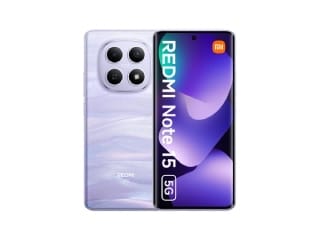- Home
- Mobiles
- Mobiles Reviews
- Sony Xperia XZ Review
Sony Xperia XZ Review

Not too long ago, Sony was one of the most revered smartphone manufacturers in India, and most regions across the world. Now, however, Sony finds itself on the fringes of the mobile market. Part of this is down to Sony's refusal to compete at the budget end of the market, where most of the action now lies. The company now operates in only a handful of markets, selling a smaller portfolio of products, and while that seems to have produced results in the short term, there are question marks over the long-term viability of Sony's mobile business.
In India, for example, the sub-Rs. 15,000 and sub-Rs. 30,000 price points are arguably the two most competitive segments in the smartphone market right now, and Sony doesn't have any recent launches in either price band. The latter price bracket of course features self-proclaimed 'flagship killers' from the likes of Xiaomi and OnePlus, among others, which have undercut high-priced smartphones from the established brands by claiming to offer similar specifications and experiences at nearly half the cost. What's really hurt the likes of HTC and Sony is that phones like OnePlus 3 and Xiaomi Mi 5 deliver on these promises for the most part.
Sony made its intentions of staying away from the budget segment pretty clear a while ago, so it's imperative that the likes of the Xperia XZ leave their mark in the premium space. The phone launched in India last month carrying a price tag of Rs. 49,990, which makes it a pretty tough sell on paper. Does the first flagship of Sony's new X series manage to justify its cost? Let's find out in our review.
Sony Xperia XZ design and display
At first glance there seems to be nothing remarkable about the Sony Xperia XZ. The design is pretty much what you'd find on most modern smartphones, with the front featuring a solid slab of Gorilla Glass 4. Most of the real estate at the front is of course dominated by the 5.2-inch full-HD display, which we will get to in just a bit. Above the display is the Sony logo, and an earpiece that doubles up as a speaker when you are watching videos or listening to music, teaming up with the speaker below the display to produce a stereo effect.
![]()
To the right of the Sony logo is an array of sensors, and to its left is the front camera with a notification LED farther out. The back is made almost entirely out of ALKALEIDO - a custom alloy designed by Sony - and is pretty bare save for Xperia branding in the middle as well as the rear camera sensor and LED flash towards the top left. The bottom features the USB Type-C port for charging and connectivity alongside the primary mic, while the top packs a 3.5mm headphone jack and an additional mic for noise cancellation.
On the right are the power button with its embedded fingerprint scanner, the volume rocker, and the dedicated camera button in an arrangement that'll be familiar to anyone who's seen recent Sony phones. The left has a tray near the top, which takes one Nano-SIM and either another Nano-SIM or a microSD card in its second slot. Thankfully, Sony has done away with the painful tray ejecting mechanism seen on many of its recent phones, and the new tray can be pulled out with minimal learning or effort. It's secure enough to remain in place and not accidentally pop out during day-to-day use.
Thanks to the predominantly metal back, the Xperia XZ manages to feel smooth without ever being too slippery. The feeling of it in-hand is one of the best we've had from a recent smartphone. In fact, for a brief while - from the time we received our Xperia XZ review unit to the day we got our hands on a Space Black iPhone 7 - Sony's newest flagship was our favourite device, if we talk only about in-hand feel.
The back does feature a small plastic strip towards the bottom with some barely visible regulatory text, and you'd think this would mar the experience a little bit, but it manages to stay out of your way for the most part. Despite Sony's claims to the contrary, the corners are more straight than rounded, and they might feel awkward at times if you are holding the phone in certain positions.
At 161 grams and 8.1mm, the Sony Xperia XZ is both heavier and thicker than the Xperia Z5, ostensibly due to the change in materials being used, but it doesn't feel particular bulky. It's available in Forest Blue, Platinum, and Mineral Black colours, with our review unit being the latter.
The Xperia XZ has a 5.2-inch full-HD display which is the same size and resolution as the one on the Xperia Z5. While some love the quad-HD panels found on many of this generation's flagship phones, and Sony itself pushed the envelope with the launch of the 4K Xperia Z5 Premium last year, we believe that 1080p looks just fine on displays this size. We have no complaints about the Xperia XZ in this department.
![]()
Visibility outdoors wasn't a problem, and as always, you can choose between the X-Reality for mobile and Super-vivid modes to find a colour temperature that's more to your liking, or simply leave both off and live with the default settings. The Xperia XZ also has a Glove Mode that can be switched on to let you interact with the touchscreen while you are wearing gloves.
Sony Xperia XZ specifications, software, and performance
Though the Xperia XZ is the first flagship of the relatively new 'X' series of Sony smartphones, its insides are pretty similar to those of the previous-generation Xperia Z5. Both share the same display size and resolution, have 3GB of RAM, feature expandable storage of up to 200GB via a microSD card, and sport 23-megapixel rear camera sensors.
There are a few key differences though - storage has been bumped up to 64GB, which is the most you get by default on any flagship from one of the 'traditional' manufacturers, if you don't count the now-discontinued Note 7. The front camera now has a 13-megapixel sensor compared to the 5-megapixel found on the Xperia Z5. Most importantly, the mercurial Snapdragon 810, which sealed the fates of many previous-generation flagships, has been replaced by the Snapdragon 820. Both SIMs support 4G and VoLTE as well as Voice-over-Wi-Fi, and we used the Xperia XZ with a Reliance Jio SIM without any problems. Call quality was decent across all networks.
In terms of day-to-day performance, we didn't face any issues with the Sony Xperia XZ. The phone runs smoothly, and switching between apps was quick and lag-free. The fingerprint scanner on the side is pretty fast, and unlike some people, we actually like this placement as it makes it easy to unlock the phone with the thumb if you are holding it in your right hand, or with the index finger if you have it in your left hand.
While everyday usage doesn't result in the kind of heating that was associated with the Xperia Z5 and several other Snapdragon 810-powered smartphones, we did run into issues while recording video. We could record only a little over 3 minutes of 4K footage before the Camera app was automatically killed as the phone's temperature had risen beyond acceptable limits. Full-HD video fared a little better, but we met the same fate after roughly 15 minutes of recording. On the other hand, the Xperia XZ handled an extended session of Asphalt 8 much better, and we didn't run into any of the aforementioned heating issues.
![]()
In terms of benchmarks, the Sony Xperia XZ was a solid performer, with 124,688 in AnTuTu and 3,460 in Geekbench's Multi-Core test. Graphics tests were also impressive, with 60fps in GFX Bench T-rex on-screen as well as 29,665 in 3DMark Ice Storm Unlimited, but in the browser-based tests, it didn't do as well as some of the other flagships.
One of the most annoying aspects of the Sony Xperia XZ, in our opinion, is the fact that the phone restarts every time you remove the SIM/microSD tray. Most Android OEMs have solved this problem, and it's incredibly frustrating to see this behaviour from a 2016 flagship phone. While this will not be a problem for our readers who don't switch SIM or microSD cards around for a living like us, the time spent waiting for the phone to restart can seem like an eternity if you are someone who finds yourself popping cards in and out all the time.
The Sony Xperia XZ runs Android 6.0.1 with Sony's own UI layer on top. Apart from the new features that Android 6.0 brings, not a lot has changed compared to the Xperia Z5. Like before, you can swipe down to bring up a search box that quickly lets you jump to any application. With the Xperia XZ, a list of 'Suggested' apps is also shown, which appears to be a mix of recently and frequently used apps.
The app switcher still includes a 'Close all' option to, well, quit all running apps, though spotting this option isn't as easy as before due to the white text. The Xperia XZ ships with a bunch of preinstalled apps including Facebook, AVG Protection, SwiftKey, Modern Combat 5, Asphalt Nitro, and a few of Sony's own apps, among others. Most of these can't be uninstalled.
![]()
Just like the Sony Xperia Z5, the Xperia XZ supports multiple user profiles, though we wished we could bind specific profiles to different fingerprints. Instead, you have to unlock the phone and manually switch between profiles. Interestingly, Sony has done away with the 'Small Apps' that shipped with the Xperia Z5 - this functionality is entirely absent on the Xperia XZ.
There are still stereo speakers, and though they aren't as loud as the ones on the Xperia Z5, audio clarity seemed just a little bit better. Overall, the speakers are a little underwhelming, especially for calls, and are just about adequate while watching videos. As we've come to expect from Sony's smartphones, there's IP68 certification for dust and water protection, which means that the phone can be submerged under water for short durations without sustaining any damage.
Sony Xperia XZ camera and battery life
Sony is touting the Xperia XZ's camera as its main highlight, and this smartphone is packed with many features to back this claim. The rear camera has three different sensors - the CMOS sensor, which can track and predict movement of objects in a frame, reducing the chances of blurred shots; the laser autofocus sensor, which is meant to make the camera better at locking focus on objects, especially in low-light conditions; and the RGBC-IR sensor, which aims to deliver accurate colour reproduction.
There's a 6-element Sony G Lens with an f/2.0 aperture and five-axis stabilisation for videos, the "world's first in a smartphone", which means the Sony Xperia XZ detects and compensates for yaw & pitch angle shake, roll shake, and also X & Y shift shake. All this is backed by an improved Sony Bionz For Mobile image processor.
The camera app is pretty much identical to what you see on other Sony phones, with the addition of controls for manual focus and shutter speed (from 1/4000 to 1) in the manual mode. This means that some of the frustrations we had during our earlier experiences with Sony phones are still unaddressed - the HDR mode can be a pain to discover; the 4K and Panorama options are buried under 'Camera Apps'; there's no burst mode; and images seem to take a tad too long to be written to storage, though you can take more shots even as the previous ones are being saved.
While the Sony Xperia XZ has a 23-megapixel sensor, it is set up to take 8-megapixel pictures by default, though this can easily be changed from the settings within the Camera app. Video recording resolution goes up to 4K. As far as actual image quality is concerned, images taken outdoors with plenty of natural light are excellent, and right up there with the best in the business in terms of the details captured.
![]()
![]() Tap to see full-sized Sony Xperia XZ camera samples
Tap to see full-sized Sony Xperia XZ camera samples
Images taken at night have decent - but not great - amount of detail, and areas around any kind of a light source within the frame tend to be a bit overexposed, which can give the appearance that certain objects are out of focus. We did manage to get some good shots in low light, but overall the performance was more of a mixed bag.
![]()
![]() Tap to see full-sized Sony Xperia XZ camera samples
Tap to see full-sized Sony Xperia XZ camera samples
The 13-megapixel front camera has a wide-angle lens and a bigger sensor than before, and you'll love taking selfies with it, save for the absence of any sort of front-facing flash. The aforementioned video stabilisation does a pretty good job of minimising the impact of hand movement when recording videos.
In terms of battery life, the Sony Xperia XZ lasted 10 hours and 21 minutes in our video loop test, which is marginally worse than the Xperia Z5 managed. Real-world performance was similar to the previous generation, in that we managed to get through a work day without any problems. Like before, Sony's Stamina and Ultra Stamina modes can stretch the life of the 2900mAh battery if and when needed, while greatly .
The Sony Xperia XZ comes with Qnovo Adaptive Charging, which claims to make your battery last twice as long, though the benefits of this technology can only be tested over the long term. The phone also features what Sony calls intuitive charging, designed to further improve the life of your battery.
"Charging your phone overnight is convenient, but if left plugged in after it's fully charged, battery life degrades," Sony explains. "Battery Care solves this by learning your wake up time. It charges to 90 percent, pauses, then tops up to 100 percent to start your day." Though the technology sounds useful, we did not notice it kicking in during our 5 week review period, roughly one third of which was spent using the Xperia XZ as our primary phone. This could well be down to our erratic usage patterns thanks to the multiple devices we were switching between, and your mileage could vary.
The Xperia XZ also supports fast charging, and Sony claims that that you can get 5.5 hours of talk time out of 10 minutes of charging. We were unable to test this out as our review unit didn't come with the quick charger that's included as part of the retail box.
Verdict
If you've made it this far in the review, you've seen that apart from a few niggles, there isn't a lot wrong with the Xperia XZ. It's a good looking phone that's made out of premium materials, has a decent display, handles almost everything you throw at it with ease, takes good pictures, and has battery life you can live with. Yet, in what's surely a sign of how far we've come in the last couple of years, it's hard to recommend that anyone should go out and spend Rs. 49,990 on this phone.
At the end of the day, to be a serious option at this kind of a price, the Sony Xperia XZ needed to have one feature - any feature - which would've put it streets ahead of the competition, and sadly, that isn't the case. Sony would like us to believe that this is true when it comes to the camera, but the real-world experience shows that while the Xperia XZ is competent, it's not the best in the business.
There's more to a smartphone than pure specifications, and so it's hard to try and convince anyone to pay this much for a Xperia XZ when the likes of the OnePlus 3 (Review) and Xiaomi Mi 5 (Review) are available at nearly half its price. While we agree that Sony's products are by and large more stable than those from emerging companies, the difference certainly isn't big enough to justify paying the kind of premium Sony expects you to pay.
It's clear that Sony won't be competing with the Chinese players on price, but Sony has to decide whether it is serious about competing in a market like India - a country that has always had a bit of a soft-spot for the Japanese giant, but one that's also been known to choose value-for-money above brand loyalty.
So, in summary, if you go ahead and buy the Xperia XZ, you will have few regrets, unless you shoot lots of videos. However, the vast majority of people would be better off looking at the latest flagships from OnePlus and Xiaomi, which aren't perfect, but show a degree of refinement that was missing from their predecessors. Or if you are shopping around the Rs. 50,000 mark, you could pick up the Samsung Galaxy S7 or the Galaxy S7 Edge and still be left with some cash to spare.
Catch the latest from the Consumer Electronics Show on Gadgets 360, at our CES 2026 hub.
Related Stories
- Samsung Galaxy Unpacked 2025
- ChatGPT
- Redmi Note 14 Pro+
- iPhone 16
- Apple Vision Pro
- Oneplus 12
- OnePlus Nord CE 3 Lite 5G
- iPhone 13
- Xiaomi 14 Pro
- Oppo Find N3
- Tecno Spark Go (2023)
- Realme V30
- Best Phones Under 25000
- Samsung Galaxy S24 Series
- Cryptocurrency
- iQoo 12
- Samsung Galaxy S24 Ultra
- Giottus
- Samsung Galaxy Z Flip 5
- Apple 'Scary Fast'
- Housefull 5
- GoPro Hero 12 Black Review
- Invincible Season 2
- JioGlass
- HD Ready TV
- Laptop Under 50000
- Smartwatch Under 10000
- Latest Mobile Phones
- Compare Phones
- Samsung Galaxy A07 5G
- Vivo Y500i
- OnePlus Turbo 6V
- OnePlus Turbo 6
- Itel Zeno 20 Max
- OPPO Reno 15 Pro Mini 5G
- Poco M8 Pro 5G
- Motorola Signature
- Lenovo Yoga Slim 7x (2025)
- Lenovo Yoga Slim 7a
- Realme Pad 3
- OPPO Pad Air 5
- Garmin Quatix 8 Pro
- NoiseFit Pro 6R
- Haier H5E Series
- Acerpure Nitro Z Series 100-inch QLED TV
- Asus ROG Ally
- Nintendo Switch Lite
- Haier 1.6 Ton 5 Star Inverter Split AC (HSU19G-MZAID5BN-INV)
- Haier 1.6 Ton 5 Star Inverter Split AC (HSU19G-MZAIM5BN-INV)


















